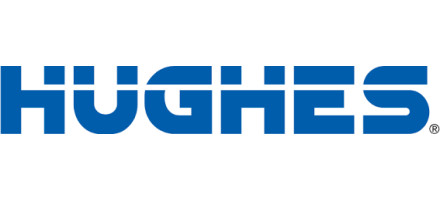Blog
May 31, 2022

By Jeff Lessner, Vice President, Defense and Intelligence Systems Division, Hughes Network Systems.
Walking the floors and attending the sessions at the Satellite 2022 show I found that the buzz within the military satellite industry continues to be the deep need for greater resilience in the Department of Defense (DoD) communications architecture. But discussion these days isn’t just about the need for it, it’s about technologies that can deliver it.
Many DoD leaders realize that their communications enterprise must be a hybrid, multitransport network where individual military systems leverage commercial technologies and satellites at all orbits. As low earth orbit (LEO) constellations like OneWeb’s join geostationary (GEO) and medium earth orbit (MEO) satellites, network services providers like Hughes can develop flexible technologies to integrate all three into a single solution, offering advantages that no single transport can provide on its own to support all applications.
For the DoD, resiliency is achieved when technologies can obfuscate adversaries, ensuring they won’t know what path is in use, and deterring interruptions like jamming. We have been working in collaboration with Honeywell and SES to demonstrate these capabilities for customers: showing how software-defined modem technologies can switch link paths dynamically to avoid any single point of failure – regardless of the environment.
Also, no surprise, the conference included a lot of talk about network security. The DoD needs to be able to authenticate every transport, vendor, technology, device, and user across every aspect of its communications networks. That’s the objective of a zero-trust architecture. Here too, the DoD can benefit from both government and commercial security standards as well as intelligent software-defined techniques to recognize and respond quickly to security threats.
MILSATCOM system designs
These trends have significant influence on MILSATCOM designs. Since the military is now integrating more commercial techniques and technologies into its once-proprietary systems, the services can take advantage of DevSecOps (development, security, and operations) and Agile development strategies to improve security and get new programs up and running for soldiers to use much more quickly.
In addition, commercial satellite communications providers can identify opportunities to integrate these technologies more fully into DoD’s architecture. For example, commercial ground technologies have been developed to make DoD network ground infrastructure more flexible, dynamic, and autonomous for uninterrupted information access. Since DoD typically manages its ground systems manually, which takes soldier expertise and time even at the tactical edge, this shift will save significant resources, time, and money.
With the military planning multitransport networks that leverage commercial and military satellites in LEO, MEO, and GEO, we also see individual agencies being inspired. The Space Development Agency (SDA) is building a proliferated LEO architecture to surround the earth with low-earth-orbit satellite layers to create a dense constellation designed to absorb the loss of a satellite without much impact. This SDA architecture will provide resiliency by using network-switching technologies that choose the optimal paths from various satellite networks to avoid transmission disruption, maintain connectivity, and self-heal the network and user terminals.
In essence, trends influence design and innovation, and vice versa. And collaboration between defense agencies and the commercial sector is ideal.
Military space meets commercial space
Without space and satellites, warfighters and aircraft in remote areas cannot communicate with commanders, period. Even with this relationship, the unmanned aircraft system (UAS) and avionics markets are very different. The military space and satellite market has typically been associated with big, expensive programs where the satellites and the user terminals are managed by different DoD entities. These space-related programs have been dominated by proprietary military technology that has taken years to develop and deploy. Military UAS and avionics, on the other hand, have evolved quickly based on rapid commercial innovation, from their early uses as large aerial-reconnaissance platforms to smaller, lighter, and more intelligent “eyes in the sky” for real-time situational awareness.
For many of the reasons and trends we’ve already discussed, the relationship between the two has coalesced. Both are critical elements of today’s data-centric operations. The military space and satellite market along with the commercial technologies that improve resiliency and security are force multipliers providing much-needed high-throughput communications to connect unmanned systems and avionics platforms to ground users worldwide and enable real-time decision-making.
Hughes is working with the government on various SATCOM programs including applying a zero-trust architecture on the Hughes 5G network we are providing to the US Navy. We are also working with prime contractor Boeing to develop and demonstrate the Protected Tactical Enterprise Services (PTES) ground system to support the US Space Force’s Protected anti-Jam Tactical Satellite (PATS) communications program.

Jeff Lessner has more than 35 years of leadership experience in executive management, business development, sales, capture management, project management, and engineering. Mr. Lessner has helped lead the Hughes Defense and Intelligence Systems Division for over six years.
Hughes Network Systems · https://www.hughes.com/defense


